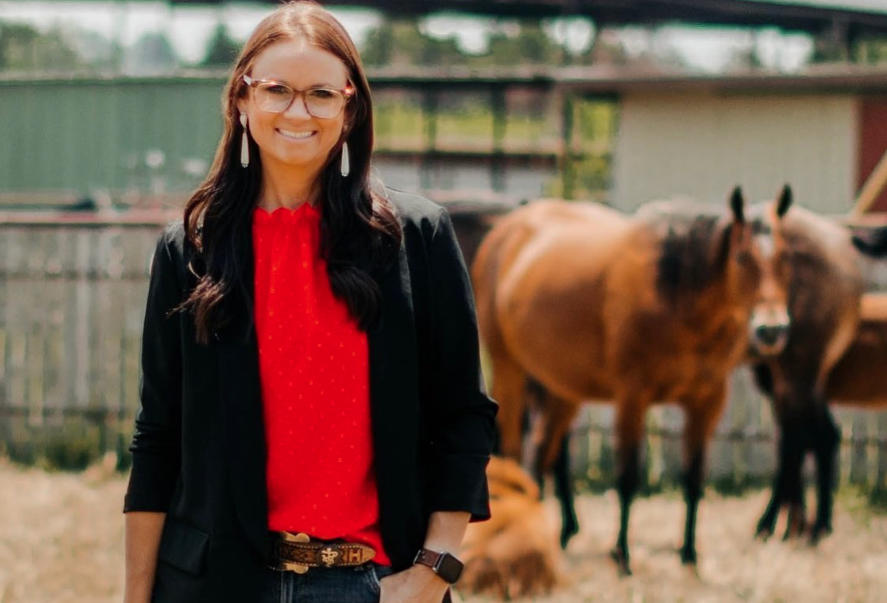
Associate Farm Editor, Reagan Calk, had the chance to visit with Dr. Rebekah Hartfield about common illnesses and injuries in cattle that she sees on a weekly basis at her clinic, Holdenville Veterinary Clinic.
Lameness in cattle is one of the most common issues, Hartfield said, and while foot rot is not the only cause of lameness, it is a frequent cause. Hartfield said lameness can also be caused by abscesses and overgrowth of the hooves.
“The other thing I love talking about is anaplasmosis, which is very common here in Oklahoma,” Hartfield said.
Anaplasmosis is seen weekly, Hartfield said and is caused by Horn Flies and can lead to severe anemia.
Hartfield said for issues that a producer is not completely confident about, she recommends bringing cattle into the clinic rather than diagnosing and treating the problem at home. One example Hartfield provided was foot rot- many times, the root of the problem is something else, she said, such as an abscess causing symptoms similar to foot rot.
“We are able to actually treat that animal more efficiently and minimize the number of times we are giving antibiotics,” Hartfield said. “You should be able to identify the problem, give it an antibiotic, treat the issue topically with things, and it should clear up. Hopefully, minimize the amount of antibiotics that are actually going into that animal.”
Hartfield also talked about the importance of breeding soundness exams for bulls. At her clinic, Hartfield said she only charges $65 per bull, which is less expensive than losing an entire calf crop due to a bull that is not sound enough to breed.
“I want those bulls to be healthy, and I want my producers to have a great calf crop,” Hartfield said. “If your bull isn’t checked whenever you turn them out once or twice a year, or whenever you turn them out, then obviously you could go a whole season without a calf crop.”
Serving on the Oklahoma Veterinary Board, Hartfield said her duties involve being a voice for veterinarians and the general public.
“We are here to protect the public and make sure veterinarians are doing their job, and make sure if there is a complaint or issue against a veterinarian, that we are looking into that and making sure that we take care of those patients that were maybe affected, or support the veterinarian in different situations,” Hartfield said.
Another topic Hartfield talked about is clients having a relationship with their veterinarian. Veterinarians must follow laws that are in place regarding prescribing certain medications, Hartfield added, and they could lose their license from prescribing medications to producers without knowing them or seeing their cattle.
“This is so important because we want to be able to give you the antibiotics that you need, but we also have to help regulate what antibiotics are getting into our production system to help with the production later on with public health,” Hartfield said. “That is why these laws are in place, and we want to help enforce those, but to do that, we have to have a relationship with the producer so we know what they need, we know what their cattle need, and we can prescribe the right medication.”

Hartfield has also written a series of children’s books to teach kids about veterinary medicine.
“I take these books to schools and actually take the animal with me that I am reading about, and then these kids get to pet, touch and learn about farm animals and what we do,” Hartfield said.
As there is a shortage of veterinarians in Oklahoma, Hartfield said she wants to encourage kids to go to vet school.
“It is an awesome career, I love my job, and I love sharing that with others,” Hartfield said.
To learn more about Dr. Hartfield and shop her book series, visit her website, https://www.doctorhartfield.com/!














